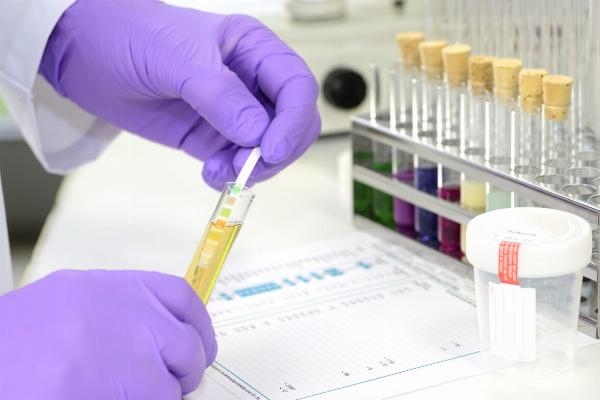SWOT Analysis of the India Drug and Alcohol Screening Market

Strong 8k brings an ultra-HD IPTV experience to your living room and your pocket.
The India Drug and Alcohol Screening Market is experiencing steady growth, driven by the rising focus on workplace safety, government regulations, and growing awareness of the impact of substance abuse on productivity. However, like any other market, it comes with its own set of strengths, weaknesses, opportunities, and threats. This SWOT analysis will help you understand the key dynamics of this market and its potential future direction.
India Drug and Alcohol Screening Market SWOT Analysis
Strengths
1. Increased Focus on Workplace Safety
One of the key strengths of the drug and alcohol screening market in India is the increasing awareness and emphasis on workplace safety. Many organizations, especially in sectors like transportation, construction, healthcare, and manufacturing, are adopting regular screening programs to minimize workplace accidents, improve productivity, and reduce liabilities. Companies are recognizing that a drug-free workforce leads to better performance and reduced absenteeism.
2. Government Regulations and Compliance
The regulatory framework in India is increasingly becoming stricter, especially for industries like transportation, aviation, and manufacturing, where the risk of substance abuse can lead to severe consequences. Government mandates requiring pre-employment drug tests, random workplace testing, and post-accident screening are pushing companies to adopt stringent testing measures. This compliance pressure has provided a significant boost to the market.
3. Technological Advancements
The use of advanced drug and alcohol screening technologies, such as AI-powered diagnostic tools, digital breathalyzers, and rapid test kits, has significantly improved the accuracy, speed, and efficiency of testing. Companies like Abbott Laboratories, Thermo Fisher Scientific, and Dräger are leveraging technological innovations to provide reliable and non-invasive testing solutions, making the process more user-friendly for both employers and employees.
4. Diverse Testing Solutions
The availability of multiple testing options, including urine, saliva, blood, and hair follicle tests, gives organizations the flexibility to choose the most suitable method based on their specific needs. Non-invasive testing options like saliva and hair tests are becoming more popular due to their convenience, helping to reduce resistance from employees and facilitating wider adoption.
Weaknesses
1. Cost of Implementation
Despite the many advantages, one of the major weaknesses of the India drug and alcohol screening market is the high cost of implementing these programs, particularly for small and medium-sized enterprises (SMEs). The expense of setting up testing facilities, purchasing equipment, and conducting regular screenings can be a deterrent for companies with limited budgets. This has limited the market penetration of drug and alcohol screening services in smaller businesses and less-regulated sectors.
2. Privacy Concerns
Another challenge facing the market is the concerns around employee privacy. Many workers may feel uncomfortable undergoing regular drug tests, particularly when methods like urine or blood tests are involved, which can feel invasive. While non-invasive methods like saliva tests are gaining traction, privacy issues still persist, leading to potential pushback from employees and labor unions.
3. Lack of Awareness in Certain Industries
While sectors like transportation and healthcare have strict drug and alcohol screening requirements, there is still a lack of awareness about the importance of workplace drug testing in other industries. Many organizations do not prioritize regular screenings unless required by law, which limits the market's overall growth potential. Awareness campaigns and education efforts are still needed to help these industries realize the benefits of drug and alcohol testing.
Opportunities
1. Expansion of Non-Regulated Sectors
The market has significant growth potential in non-regulated sectors, such as IT, retail, and hospitality, where drug and alcohol testing is not yet mandatory but can significantly improve workplace safety and productivity. As awareness increases, these sectors could become major consumers of screening services, providing substantial opportunities for market growth.
2. Integration with Corporate Wellness Programs
There is an opportunity for drug and alcohol screening providers to integrate their services with broader corporate wellness programs. Many organizations are beginning to focus on employee health and wellness as a means to boost productivity and reduce absenteeism. Offering drug and alcohol testing as part of a holistic wellness initiative can increase adoption, particularly in industries that may not otherwise see the immediate need for these services.
3. Mobile Screening Services
The rise of mobile screening units presents a lucrative opportunity for growth in India’s drug and alcohol screening market. With on-site mobile services, companies can conduct random or post-accident screenings without disrupting their day-to-day operations. Mobile testing is particularly advantageous for sectors like logistics, transportation, and construction, where employees may work in multiple locations or on the move.
4. Rising Awareness in Educational Institutions
With growing concerns over drug abuse among students, particularly in higher educational institutions, there is an increasing opportunity to expand drug and alcohol screening programs into the education sector. By partnering with schools and universities, screening providers can offer targeted services that help educational institutions maintain drug-free environments and address substance abuse issues more proactively.
Threats
1. Competition from Alternative Solutions
The drug and alcohol screening market in India faces competition from alternative solutions, such as behavioural health programs and rehabilitation services. Some organizations may prefer to focus on counselling and assistance programs rather than screening and testing, which could limit the growth potential for traditional drug and alcohol screening services.
2. Changes in the Regulatory Environment
While the current regulatory environment favours the growth of the drug and alcohol screening market, any changes in government policies or a relaxation of regulations could negatively impact the market. If the government reduces the legal requirements for drug and alcohol testing in industries like transportation or aviation, the demand for screening services could decline.
3. Cultural Resistance
India’s cultural sensitivities regarding personal privacy and trust in the workplace can present challenges for the widespread adoption of drug and alcohol testing. In some regions, employees may view testing as intrusive or unnecessary, especially if substance abuse is not seen as a significant problem in the local workforce. This cultural resistance could hinder the broader implementation of testing programs across industries.
4. Technological Failures and Accuracy Concerns
As more organizations adopt AI-powered diagnostic tools and digital breathalyzers, there is a risk of technological failures or inaccuracies in test results. False positives or inaccurate readings could lead to legal issues, employee dissatisfaction, and damaged reputations for companies implementing these programs. Ensuring high reliability and accuracy is crucial to maintaining the market’s credibility and trust.
Conclusion
The India Drug and Alcohol Screening Market is well-positioned for growth, with strong drivers such as increased regulatory scrutiny, workplace safety concerns, and technological advancements. However, it also faces challenges such as high implementation costs, privacy concerns, and competition from alternative solutions. Companies that can navigate these weaknesses and threats while capitalizing on opportunities in non-regulated sectors, educational institutions, and mobile services will be able to thrive in this evolving market.
By addressing cultural resistance and improving awareness in under-served industries, the market for drug and alcohol screening in India has the potential to grow even further in the coming years. As organizations continue to prioritize employee health and safety, the need for reliable, accurate, and non-invasive testing solutions will remain a key component of workplace management.
Note: IndiBlogHub features both user-submitted and editorial content. We do not verify third-party contributions. Read our Disclaimer and Privacy Policyfor details.



